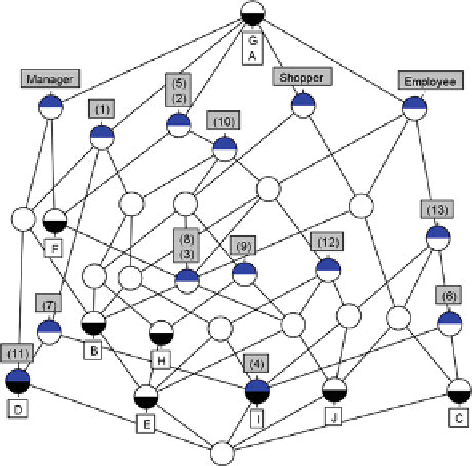Information Technology Reference
In-Depth Information
Fig. 6
System goal lattice after reconciliation
6.6 Analysis of Stakeholder Intentions
With the analysis methods we developed, we analyzed the structural properties of
the system goal lattice of self-checkout systems and evaluate the effectiveness of the
reconciliation of the goals as follows.
Analysis of Goals from Stakeholders' Viewpoint
. Figure
7
illustrates the system
goal lattice with the highlight of the goals originating from managers; F, B, D, E
and J. If we assume that mangers are the most influential stakeholder group, we
assume that the goals highlighted in Fig.
7
need to be satisfied first.
Analysis of Commonality and Variability of Goals
. By comparing three goal lat-
tices from the three stakeholders of manager, staff, and shopper, we can identify the
common goals and variability as illustrated in a Venn diagram (Fig.
8)
.
While goals B, E, and J are commonly in the interest of three stakeholders, goal
I, “Less Shopper Claim”, and H, “Shorter Checkout Time” are expressed only by
staff and shopper. The variability reflects the intentions of stakeholders well. The
contribution of our method is the ability to systematically identify the commonality
and variability, i.e. difference in intentions.
Structural Properties of Goals by the Order Relation
. By comparing the goals
originating from the managers' viewpoint in Fig.
7
with those from the shopper's
viewpoint in Fig.
9,
the following structural properties can be found.
a) Direct Order Inclusive Relation of Goals: Out of 5 goals from the shoppers'
viewpoint, goals B, E, and J are automatically met if the managers' goals are

Search WWH ::

Custom Search